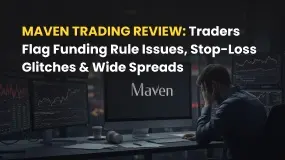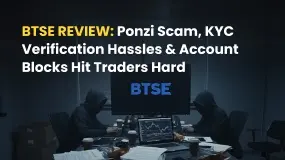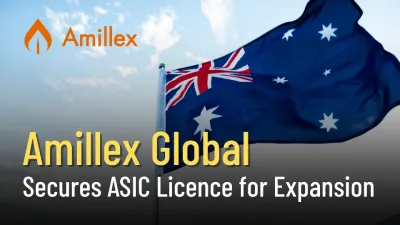简体中文
繁體中文
English
Pусский
日本語
ภาษาไทย
Tiếng Việt
Bahasa Indonesia
Español
हिन्दी
Filippiiniläinen
Français
Deutsch
Português
Türkçe
한국어
العربية
FX Global Code of Conduct: Building on Five Years of Progress
Abstract:Since its introduction five years ago, a lot has changed in the FX market. A common set of guidelines was issued to promote the integrity and effective functioning of the wholesale FX market

The BIS Foreign Exchange Working Group published the FX Global Code of Conduct on 25 May 2017 with the aim of providing a common set of guidelines to promote the integrity and effective functioning of the wholesale FX market.
Take Advantage of the Biggest Financial Event in London. This year we have expanded to new verticals in Online Trading, Fintech, Digital Assets, Blockchain, and Payments.
Since its introduction five years ago, a lot has changed in the FX market. The way we communicate, collaborate and the tools and technology we use have all been transformed.
The code itself has also evolved. The Global Foreign Exchange Committee (GFXC) updated 11 of the Code's 55 principles in July 2021 to strengthen its guidance on anonymous trading, algorithmic trading, transaction cost analysis, disclosures and settlement risk.
There is no doubt that the FX Global Code has improved practices across the industry while promoting transparency and spurring debate in key areas such as transaction cost analysis. But how can the GFXC build on achievements to date and maintain this momentum in years to come?
Promoting adoption among buy-side and corporates
One of the most important features of the FX Global Code is that is does not impose any legal or regulatory obligations on market participants. Instead, its a voluntary code of conduct designed to set out best practice and processes.
So, when it was first introduced, the big question was whether market participants would sign up and adhere to a voluntary code.
The BIS and many central banks took on the responsibility of driving adoption among key market participants. Some even required counterparties to sign the code and threatened to cut ties with those that didnt comply.
Combined with a general feeling that the industry needed to do better by standardising best practice and promoting transparency, this led to widespread adoption and there are now over 1,100 signatories on the global register.
But before we start patting ourselves on the back and saying job well done, its important to note that very few buy-side and corporate firms have signed up the FX Global Code.
In fact, of the 1,100+ signatories, there are only 80 asset managers, 30 corporates and 13 pension funds. In many cases, these types of firms arent aware of the code despite needing the code the most, given that many continually get a bad deal and struggle to achieve best execution and full transparency.
The GFXC recognised the lack of buy-side adoption as an issue back in 2018 and it set up a specific outreach working group to facilitate more adoption among these types of firms. At the time, only 60 buy-side firms had signed up the code. Fast forward four years and only 93 have signed up.
It‘s vital that we increase awareness of the code among buy-side firms and corporates as it exists for their protection. It enables them to scrutinise their liquidity providers and partners’ processes against best practice, ensuring they achieve best execution and get the transparency they deserve.
Renewing commitments to the code
In July 2021, the GFXC published the updated version of the code following an extensive process of consultation with the foreign exchange committees around the world and a public request for feedback in April of the same year.
Guy Debelle, GFXCs then chair, said: “The changes to the Code will ensure that the Code continues to promote the integrity of the market. Many of the changes are designed to bring about greater transparency in an increasingly complex market.”
The GFXC acknowledged that these changes would affect certain parts of the market more than others and said it anticipated that it would take around 12 months for practices to be brought into alignment with updated principles. And, this year, we have started to see some institutions, including the Bank of England, renew their commitment to the new code which is positive.
What I would like to see is the GFXC requiring all signatories to review and renew their commitments to the updated FX Global Code, whether theyre affected by the new changes or not.
Many signed up five years ago and so much has changed in that time with the advent of remote working, adoption of new technology and the great resignation which saw many change jobs.
A formal renewal process would help ensure that all signatories remain compliant and committed to the code and its principles.
Focusing on smaller market participants
The FX Global Code has been welcomed by the FX community and provided a forum for participants to debate a range of issues, from algorithmic trading to last look and TCA.
That said, it‘s important we don’t rest on our laurels and see 1,100+ signatories as enough. We need to focus on the smaller market participants (e.g. buy-side and corporates) as together they make up a significant portion of the market. These are the firms which benefit most from the best practice set out in the code and, as an industry, we need to make sure we bring them on this journey with us.
In summary, we believe the FX Global Code should be for the whole FX market, not just for the wholesale FX market. Theres still more to do to get there.

Disclaimer:
The views in this article only represent the author's personal views, and do not constitute investment advice on this platform. This platform does not guarantee the accuracy, completeness and timeliness of the information in the article, and will not be liable for any loss caused by the use of or reliance on the information in the article.
Read more

Maven Trading Review: Traders Flag Funding Rule Issues, Stop-Loss Glitches & Wide Spreads
Are you facing funding issues with Maven Trading, a UK-based prop trading firm? Do you find Mavin trading rules concerning stop-loss and other aspects strange and loss-making? Does the funding program access come with higher spreads? Does the trading data offered on the Maven Trading login differ from what’s available on the popular TradingView platform? These are some specific issues concerning traders at Maven Trading. Upset by these untoward financial incidents, some traders shared complaints while sharing the Maven Trading Review. We have shared some of their complaints in this article. Take a look.

BTSE Review: Ponzi Scam, KYC Verification Hassles & Account Blocks Hit Traders Hard
Have you lost your capital with BTSE’s Ponzi scam? Did the forex broker onboard you by promising no KYC verification on both deposits and withdrawals, only to be proven wrong in real time? Have you been facing account blocks by the Virgin Islands-based forex broker? These complaints have become usual with traders at BTSE Exchange. In this BTSE review article, we have shared some of these complaints for you to look at. Read on!

Amillex Global Secures ASIC Licence for Expansion
Amillex Global gains ASIC AFSL licence, boosting FX and CFDs credibility. Expansion targets Asia, Australia, and institutional trading growth.

Inzo Broker Review 2025: Is It Legit or a High-Risk Gamble?
When you ask, "Is inzo broker legit?" you want a clear, straight answer before putting your money at risk. The truth about Inzo Broker is complicated. Finding out if it's legitimate means looking carefully at its rules, trading setup, and most importantly, the real experiences of traders who have used it. The broker shows a mixed picture - it has official paperwork from an offshore regulator, but it also has many user warnings about how it operates. This review gives you a fair and fact-based investigation. We will break down all the information we can find, from company records to serious user complaints, so you can make your own clear decision.
WikiFX Broker
Latest News
Is Fyntura a Regulated Broker? A Complete 2025 Broker Review
Zetradex Exposed: Withdrawal Denials, Account Freeze & Bonus Issues Hurt Traders
Is Forex Zone Trading Regulated and Licensed?
PINAKINE Broker India Review 2025: A Complete Guide to Safety and Services
Exness Restricted Countries List 2025 Explained
Is Uniglobe Markets Legit? A 2025 Simple Guide to Its Safety, Services, and User Warnings
Is Inzo Broker Safe or a Scam? An Evidence-Based Analysis for Traders
WikiEXPO Dubai 2025 “Welcome Party” Kicks Off Tonight!
He Trusted a WhatsApp Group and Lost RM659,000
Moomoo Singapore Opens Investor Boutiques to Strengthen Community
Currency Calculator



